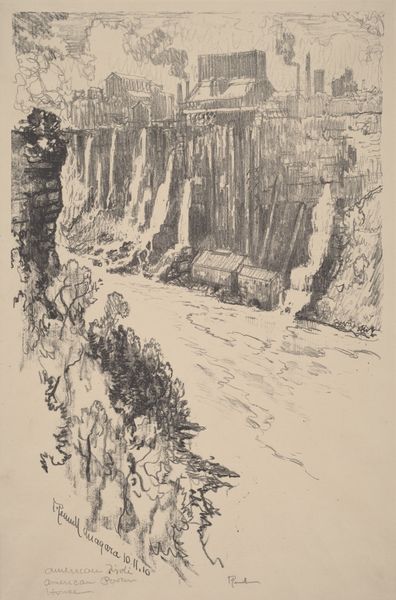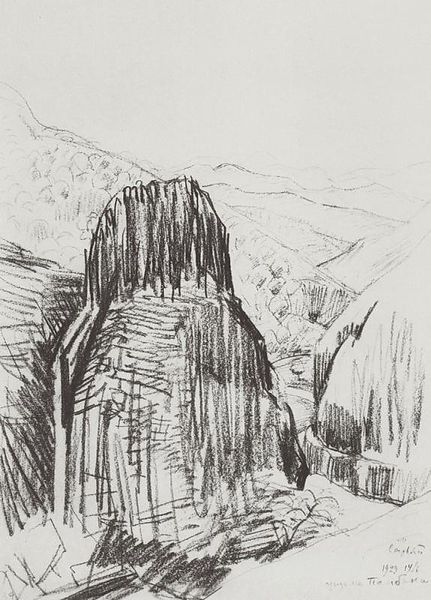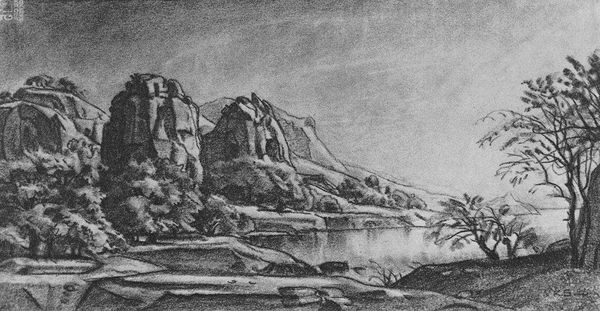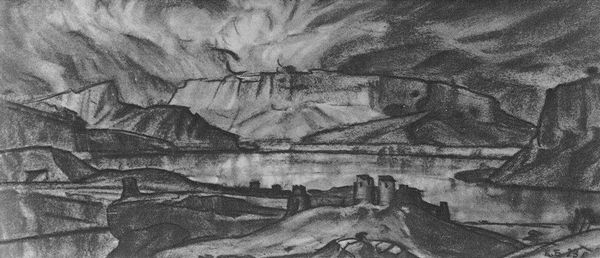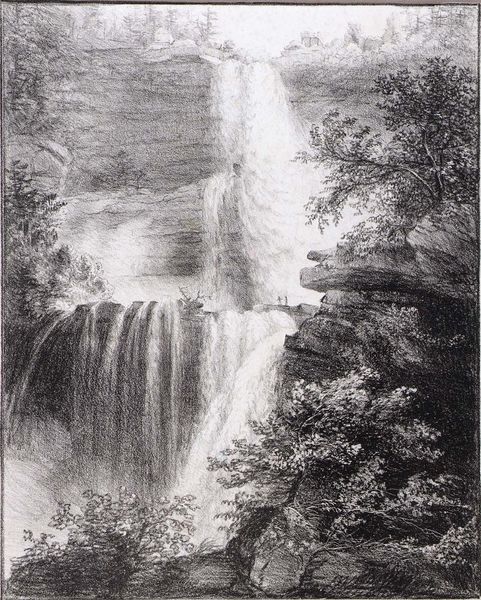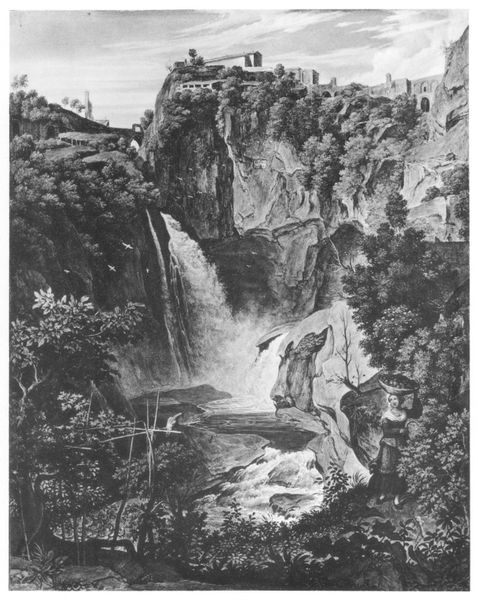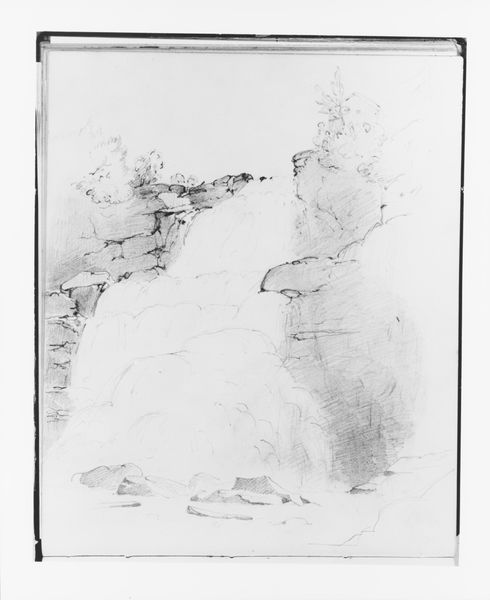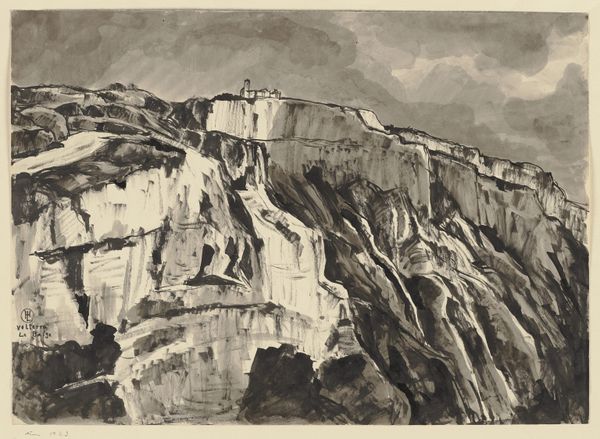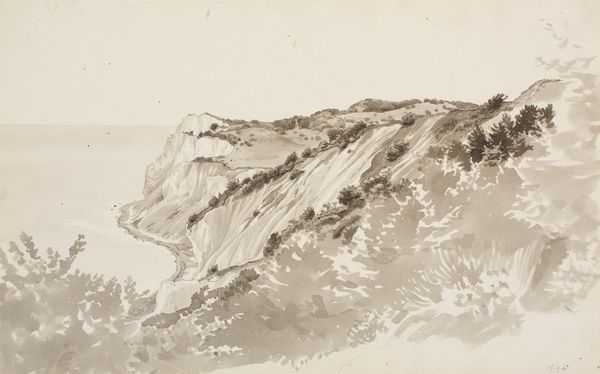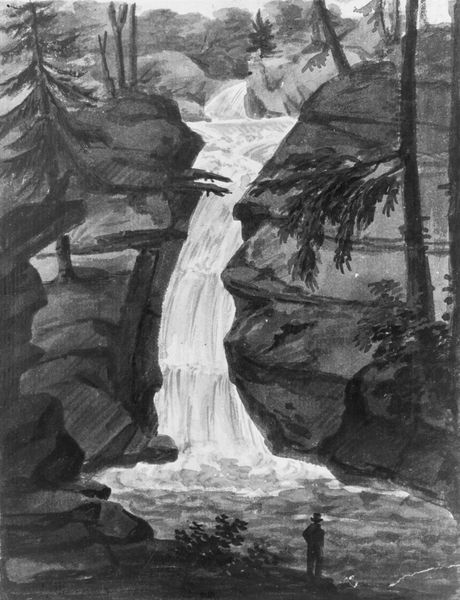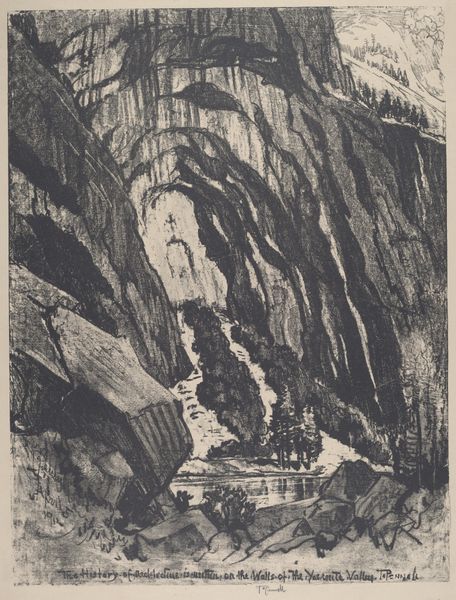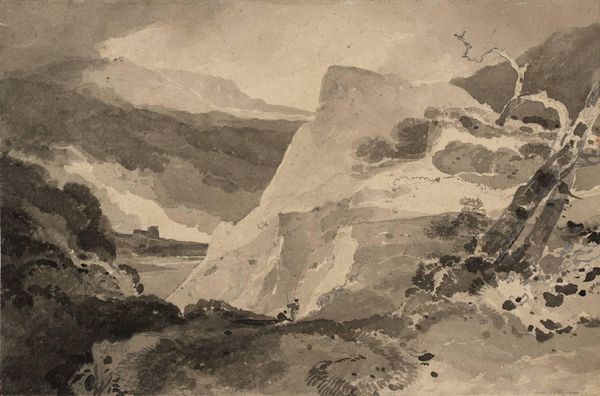
Dimensions: 9 13/16 x 8 15/16 in. (24.9 x 22.7 cm)
Copyright: Public Domain
Editor: Here we have Jasper Francis Cropsey’s "American Falls, Niagara," a pencil and charcoal drawing from 1855, housed here at the Met. The dramatic light and shadow immediately grab your attention, and it makes you wonder, how did he create this work? What's your take on it? Curator: What interests me most is Cropsey's labor in depicting the falls. Think about the physical effort required to produce this level of detail with pencil and charcoal en plein air. His material choices, easily transportable and relatively inexpensive, suggest a specific approach to landscape art tied to both practicality and Romantic ideals. Editor: So you’re saying that his materials weren’t just arbitrary choices? Curator: Exactly! The paper itself, its texture and quality, would have influenced the mark-making, the shading. Pencil and charcoal allowed for corrections, erasures, and a certain freedom of expression absent in, say, a more formal oil painting. Consider also how the finished product--the drawing--was distributed, consumed. Was it preparatory? A sketch for a larger work? Or an artwork meant for direct sale or viewing? Editor: That's fascinating. I hadn’t considered the commercial aspects of a drawing like this, or how his choices may reflect larger artistic values! Curator: Absolutely! And beyond his choices, consider also the social and economic context in which he worked – what other means of artistic production might have also informed his style? This makes the whole viewing experience a more informed process, in my view. Editor: Definitely. Looking at the work now, it becomes much more than just a pretty picture. There’s so much more under the surface related to production. Curator: Right. And I wonder: could similar inferences and questions also shed new light on some other artworks as well?
Comments
No comments
Be the first to comment and join the conversation on the ultimate creative platform.

